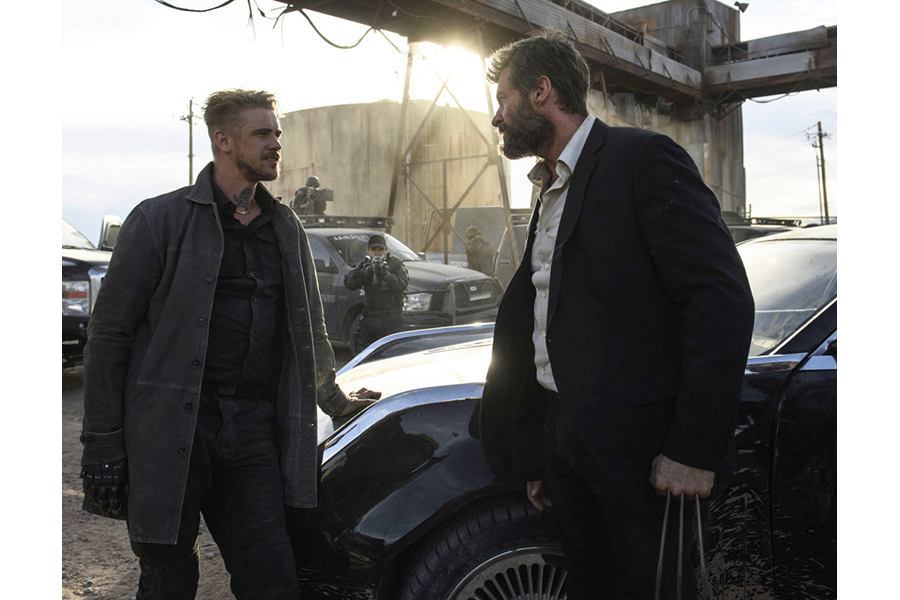With 'Logan,' superhero flicks face new test as adult-only fare
Loading...
The movie “Logan,” an R-rated superhero tale set in the “X-Men” universe, is now in theaters and its opening weekend box office performance will be the latest test of an older superhero movie audience.
“Logan” stars Hugh Jackman as Wolverine, who is now living in the future with mutants like him close to being completely gone. His mentor, Professor Xavier (Patrick Stewart), is one of the mutants who has survived and the two encounter a young girl named Laura who has powers that are similar to Logan’s.
Unlike the past “X-Men” movies, which stretch back to 2000, “Logan” is rated R, with the MPAA rating it with that label for “strong brutal violence and language throughout, and for brief nudity.”
While it may be difficult to remember with superhero movies ruling Hollywood and drawing so many different age groups, comic books, which are of course the basis for the “X-Men” movies, used to be considered a children’s pursuit. In 1986, Los Angeles Times writer Eric Bailey wrote, “Golly gee! Comic books aren’t just for kids anymore” and discussed adults who enjoy purchasing comic books and finding rare ones.
Earlier that year, the “Batman” comic “The Dark Knight Returns” had been released, which had a grim story and the popularity of which likely prompted the various dark tales that soon came from comic books. “The success of ‘DKR’ ushered in a wave of copycats that sent superhero comics spinning down a grim and gritty spiral, sucking the fun out of a genre that was built on the idea of men and women putting on colorful costumes and having fanciful adventures as they fought equally colorful evil-doers,” A.V. Club writer Oliver Sava writes.
A.V. Club writer Caitlin Rosberg added, “I would argue that this book in particular can be credited with helping to establish comic books as a medium to be taken seriously as literature by fans and academics alike.”
In the comic book and graphic novel world, other works such as “Watchmen” (which came out later in 1986) and “Persepolis” (published in 2000) would soon be hailed as impressive works of fiction for any age, not just stories for children.
When "Batman" hit the big screen in 1989, some, such as Los Angeles Times critic Sheila Benson, questioned whether the movie was even acceptable for children. “The Joker, with his gruesome death dealing, is also the cautionary figure for parents of young children,” Ms. Benson wrote at the time. “Take that PG-13 very seriously; this is where bad dreams are born.”
The mid-2000s “Dark Knight” film series by Christopher Nolan had dark themes and sometimes so much violence that observers wondered if the PG-13 films should have been rated R.
Comic book movies are doubtlessly popular today with children; we’ve all seen Captain America and Iron Man merchandise. Yet the movies are far from just kid stuff now, as seen with the opening weekend demographics for the 2016 Marvel comic book hit “Captain America: Civil War,” in which teenagers only made up 11 percent of those who bought tickets opening weekend, according to the Hollywood Reporter. Adults were 69 percent of that group, while families followed at 20 percent.
And earlier in 2016, the R-rated hit “Deadpool” made no pretense of being for children and became a big success. And while the film was popular with young adults, only 47 percent of opening weekend ticket buyers were under 25.
In comic books’ transition from being seen as just for kids to being adult fare as well, the genre’s status in some ways mirrors that of animated movies. While likely seen once as only for children, the work of Disney, Pixar, and director Hayao Miyazaki, to name only a few, yielded animated movies that were impressive for any viewer, with Disney’s 1991 film “Beauty and the Beast” receiving a best picture nomination, the only animated movie to do so when only five movies could compete for the prize. “Animated movies [are] not just for kids,” Time Magazine staff wrote in naming films including Mr. Miyazaki’s “Spirited Away” and Pixar’s “WALL-E” as impressive works.
When “Finding Dory,” Pixar’s most recent movie, opened in 2016, Deadline writer Anthony D’Alessandro wrote, “Even though ‘Dory’ pulled in 65 percent families, the studio noticed that a number of adults are showing up, including young couples sans kids, a testament to the Pixar character’s broad appeal.”






